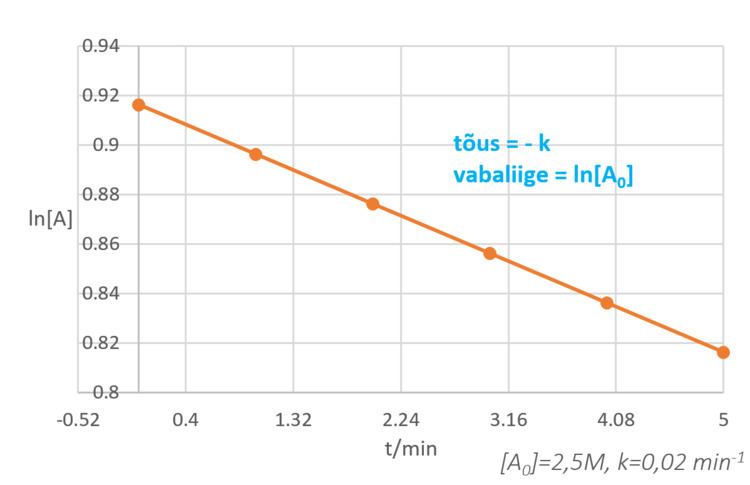 | ||
A first-order reaction is a reaction that proceeds at a rate that depends linearly on only one reactant concentration.
Contents
Differential Rate Law
A first order reaction depends on the concentration of only one reactant (a unimolecular reaction). Other reactants can be present, but each will be zero order. The rate law for a reaction that is first order with respect to a reactant A is:
Rate = k[A]1
where k is the rate constant, which can only be found through experimental data.
Integrated Rate Law
The integrated first order rate law with respect to a reactant A is:
ln[A] = -kt + ln[A0]
where k is the rate constant. The law is also commonly written as:
[A] = [A0]e−kt
When graphed on a plane of [Concentration] vs. Time (s−1), a first order reaction will have a graph with a negativeThe half-life formula for a first-order reaction is as follows: t1/2 =ln2 * k-1e, linear slope.
Half-Life
t(1/2)=0.693/k half life of first order reaction does not depend on reactant concentration.
